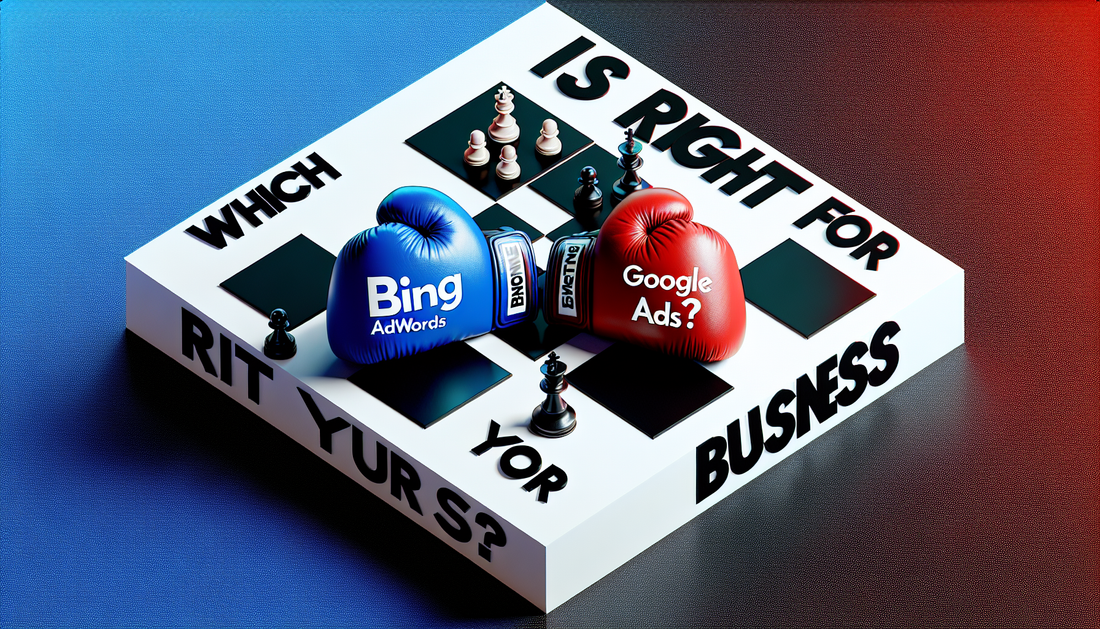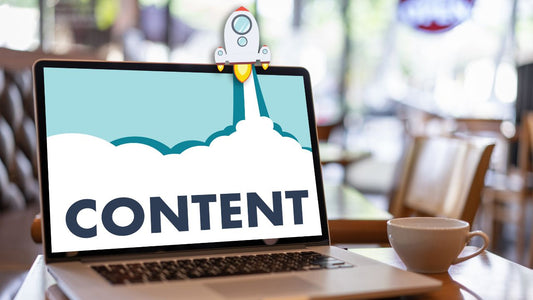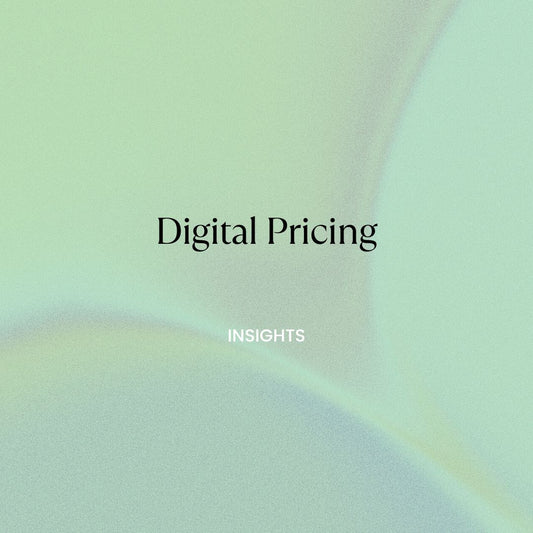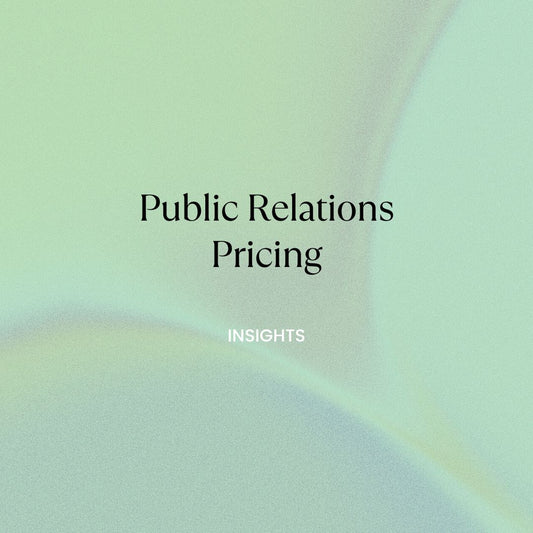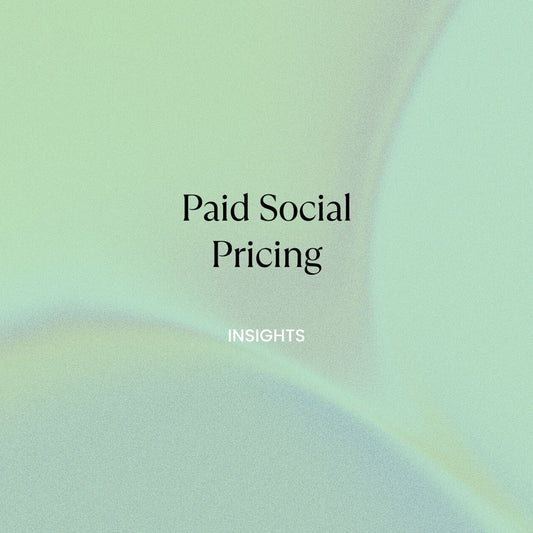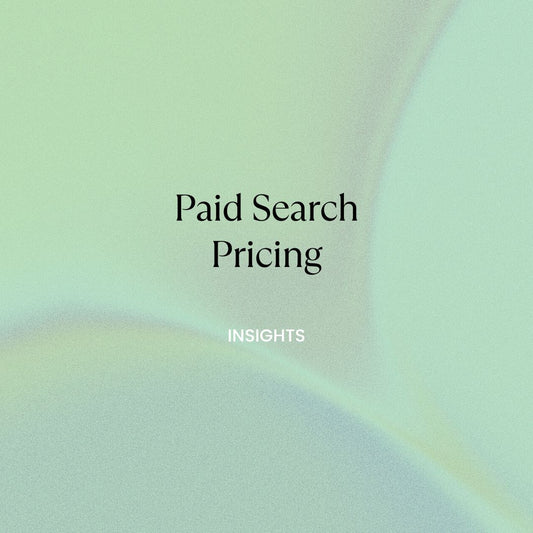As a business owner, choosing the right advertising platform can significantly impact your marketing success. Bing AdWords and Google Ads are two popular options that offer unique advantages and challenges. This blog focuses on the comparison between these platforms, equipping businesses with the knowledge needed to make an informed decision on which platform best aligns with their goals and objectives.
The Difference Between Bing AdWords and Google Ads
In order to make an informed decision when choosing between Bing AdWords and Google Ads, it is essential to understand the key features and target audience of each platform, as well as their similarities and differences.
Overview of Google Ads
Google Ads, formerly known as Google AdWords, is a popular online advertising platform that allows businesses to create and display ads on Google's search engine results pages and its partner websites. Some of the main features of Google Ads include:
- Search, display, and video advertising
- Keyword targeting and bidding
- Location and demographic targeting
- Remarketing capabilities
- Conversion tracking and analytics
The target audience for Google Ads is vast, as it reaches users across the Google search engine and its partner websites. This makes it suitable for businesses of all sizes and industries looking to promote their products or services to a wide audience.
Overview of Bing Ads
Bing Ads, now known as Microsoft Advertising, is a similar online advertising platform that allows businesses to create and display ads on Bing's search engine results pages and its partner websites. Bing Ads offers features such as:
- Search and display advertising
- Keyword targeting and bidding
- Location and demographic targeting
- Remarketing capabilities
- Conversion tracking and analytics
While Bing's user base is smaller than Google's, it still reaches a significant audience, making it a viable option for businesses looking to target a more niche market or supplement their Google Ads campaigns.
Key Similarities and Differences Between the Two Platforms
Both Bing AdWords and Google Ads provide businesses with the opportunity to reach potential customers through search and display advertising. They offer similar targeting options, such as keywords, demographics, and location, as well as remarketing capabilities and conversion tracking tools. However, there are some notable differences between the two platforms:
- Market Share: Google Ads has a larger market share compared to Bing Ads, reaching a wider audience and offering greater potential for businesses to reach their target market.
- Cost: Bing Ads often has a lower average cost-per-click (CPC) compared to Google Ads, making it a more cost-effective option for businesses with a limited advertising budget.
- User Demographics: Bing Ads' user base tends to be older and more affluent compared to Google Ads, which may impact the effectiveness of your campaigns depending on your target audience.
- Search Partner Network: While both platforms offer advertising on partner websites, the reach and quality of these networks may differ between Bing Ads and Google Ads.
By understanding the key similarities and differences between Bing AdWords and Google Ads, businesses can make a more informed decision on which platform best aligns with their marketing goals and objectives.
Reach: Bing Ads vs. Google Ads
When considering which advertising platform to use for your business, it's essential to understand the market share, user base, geographic reach, and target demographics of both Bing Ads and Google Ads. This information can help you determine which platform is more likely to reach your desired audience and yield the best results for your specific industry and location.
Market Share and User Base of Both Platforms
Google Ads holds a dominant position in the online advertising market, with a significantly larger user base compared to Bing Ads. This means that by using Google Ads, your ads have the potential to reach a wider audience. However, this also means that there may be more competition for ad space, which can drive up costs. On the other hand, Bing Ads, with its smaller user base, may offer less competition and lower costs, making it a viable option for businesses targeting a more niche market or looking to supplement their Google Ads campaigns.
Geographic Reach and Target Demographics
Both Bing Ads and Google Ads have a global reach, but their user demographics differ. Google Ads has a broader demographic reach, while Bing Ads' user base tends to be older and more affluent. Depending on your target audience, one platform may be more suitable than the other. For example, if your business targets an older, more affluent demographic, Bing Ads might be a better fit. Conversely, if your target audience is younger and more diverse, Google Ads may be the better choice.
Implications for Businesses in Different Industries and Locations
The reach and demographic differences between Bing Ads and Google Ads can have implications for businesses in various industries and locations. For instance, businesses in industries that cater to an older, more affluent audience may find more success with Bing Ads, while those targeting a younger, more diverse audience may achieve better results with Google Ads. Additionally, businesses operating in specific geographic locations might find that one platform has a stronger presence in their target market than the other. As a result, it is crucial to research and analyze the reach and demographics of both platforms to determine which will best serve your business's unique needs and goals.
Cost: Bing Ads vs. Google Ads
One crucial factor in determining the best advertising platform for your business is the cost. In this section, we will discuss the average cost-per-click (CPC) on both Bing Ads and Google Ads, the factors influencing CPC, and tips for optimizing your ad budget on these platforms.
Average Cost-per-Click (CPC) on Both Platforms
While both Bing Ads and Google Ads operate on a cost-per-click model, the average CPC on each platform can vary. Generally, Bing Ads offers lower CPC compared to Google Ads, which can make it a more cost-effective option for businesses with a limited advertising budget. However, keep in mind that the lower CPC on Bing Ads may also be due to its smaller user base and market share, which could limit the overall reach of your ads.
Factors Influencing CPC
Several factors can impact the CPC on both Bing Ads and Google Ads, including the competitiveness of your industry, the quality of your ads, and your target audience. Here are some of the most significant factors influencing CPC:
- Keyword competitiveness: Popular keywords with high search volume are likely to have higher CPC due to increased competition for ad placements.
- Ad quality: Both Bing Ads and Google Ads use a quality score to determine your ad's relevance and overall performance. A higher quality score can result in lower CPC and better ad placements.
- Target audience: The demographics, location, and interests of your target audience can impact CPC, as certain groups may be more expensive to target based on their online behavior and preferences.
Tips for Optimizing Your Ad Budget on Bing AdWords and Google Ads
To make the most of your advertising budget on both Bing AdWords and Google Ads, consider the following tips:
- Conduct keyword research: Identify high-performing, low-competition keywords that are relevant to your business and target audience. This can help reduce CPC and improve ad performance.
- Improve ad quality: Create compelling ad copy, use relevant keywords, and optimize your landing pages to improve your quality score and lower CPC.
- Test and refine your targeting: Regularly review and adjust your targeting settings, such as location, demographics, and interests, to ensure you're reaching the most relevant audience at an optimal cost.
- Monitor and optimize your campaigns: Regularly review your campaign performance, identify areas for improvement, and make necessary adjustments to maximize your return on investment.
By understanding the costs associated with Bing AdWords and Google Ads, as well as implementing optimization strategies, your business can make the most of its advertising budget and achieve the best possible results.
Targeting Capabilities: Bing Ads vs. Google Ads
To make the most of your advertising efforts, it is essential to understand the targeting capabilities of Bing Ads and Google Ads. By comparing the targeting options, keyword targeting features, and the advantages and disadvantages of each platform, you can make an informed decision on which platform will best serve your business's unique needs and goals.
Overview of Targeting Options on Both Platforms
Both Bing Ads and Google Ads offer a range of targeting options to help you reach your desired audience. These options include:
- Location targeting: Reach users based on their geographic location, such as country, region, city, or postal code.
- Demographic targeting: Target users based on their age, gender, parental status, or household income.
- Interest and affinity targeting: Focus on users with specific interests or who are part of particular affinity groups.
- Remarketing: Show ads to users who have previously interacted with your website or app.
- Device targeting: Target users based on the type of device they are using, such as desktop, mobile, or tablet.
Comparison of Keyword Targeting Features
Keyword targeting is a critical aspect of both Bing Ads and Google Ads. Both platforms allow you to bid on keywords relevant to your business, and your ads will appear when users search for these keywords. However, there are some differences in the way each platform handles keyword targeting:
- Keyword Match Types: Google Ads offers broad match, phrase match, exact match, and negative match types, while Bing Ads offers broad match, phrase match, exact match, and negative keywords.
- Keyword Research Tools: Both platforms provide keyword research tools, but Google Ads' Keyword Planner tends to offer more comprehensive data and insights due to its larger user base and search volume.
- Keyword Bidding Strategies: Both platforms offer various bidding strategies, such as manual, enhanced, or automated bidding, to help you optimize your keyword bids and achieve your desired ad placements.
Advantages and Disadvantages of Each Platform's Targeting Capabilities
When comparing the targeting capabilities of Bing Ads and Google Ads, it's essential to consider the advantages and disadvantages of each platform. Some of the key points to consider include:
- Reach: Google Ads offers a broader reach due to its larger user base, while Bing Ads may be more suitable for targeting a niche audience or supplementing your Google Ads efforts.
- Cost: Bing Ads generally offers lower CPC compared to Google Ads, which may make it a more cost-effective option for businesses with limited budgets.
- User Demographics: Bing Ads' user base tends to be older and more affluent, which may impact the effectiveness of your campaigns depending on your target audience.
- Ad Formats and Extensions: Google Ads offers more ad formats and extensions compared to Bing Ads, which can help enhance your ads' visibility and engagement.
By understanding the targeting capabilities of Bing Ads and Google Ads, businesses can make an informed decision on which platform will best serve their unique needs and goals, ultimately leading to more successful ad campaigns and greater return on investment.
Ease of Use: Bing Ads vs. Google Ads
When comparing Bing Ads and Google Ads, it's essential to consider the ease of use of both platforms. This includes factors such as user interface and navigation, the learning curve for new users, and the available resources and support for advertisers. By understanding these aspects, businesses can make an informed decision on which platform will be more manageable and efficient for their marketing efforts.
User Interface and Navigation
Both Bing Ads and Google Ads have user-friendly interfaces designed to help advertisers manage their campaigns efficiently. However, Google Ads is often considered to have a more intuitive interface, making it easier for new users to navigate and create campaigns. Bing Ads has also made improvements to its interface in recent years, but some users may still find it slightly less intuitive compared to Google Ads.
Learning Curve for New Users
As with any new platform, there can be a learning curve when using Bing Ads and Google Ads for the first time. Google Ads, with its more intuitive interface, may have a slightly shorter learning curve for new users. However, both platforms offer a range of educational resources, such as tutorials, guides, and webinars, to help users understand the various features and best practices for creating successful campaigns.
Available Resources and Support for Advertisers
Bing Ads and Google Ads both offer extensive resources and support for advertisers, aimed at helping them maximize the effectiveness of their campaigns. These resources include:
- Help Centers: Both platforms provide comprehensive help centers with articles, guides, and FAQs to assist users in managing their campaigns.
- Community Forums: Bing Ads and Google Ads have active community forums where users can ask questions, share insights, and learn from other advertisers.
- Webinars and Training: Both platforms offer webinars, training sessions, and certification programs to help advertisers learn the ins and outs of the platforms and stay up-to-date with the latest features and best practices.
- Customer Support: Bing Ads and Google Ads provide customer support through various channels, such as email, phone, and chat, to assist users with any issues or questions they may have about their campaigns.
By considering the ease of use, learning curve, and available resources and support for Bing Ads and Google Ads, businesses can make an informed decision on which platform will best suit their needs and provide the most efficient and effective advertising experience.
Conversion Rates and Revenue: Bing Ads vs. Google Ads
In the competitive world of online advertising, achieving high conversion rates and revenue is a crucial goal for businesses. When comparing Bing Ads and Google Ads, it's essential to consider the factors that influence conversions and revenue on both platforms and learn from successful case studies. Additionally, implementing strategic tips for maximizing conversions and revenue can help businesses achieve their marketing objectives and improve their return on investment.
Factors Influencing Conversions and Revenue on Both Platforms
Several factors can impact the effectiveness of your ad campaigns on Bing Ads and Google Ads, ultimately influencing your conversions and revenue. Some key factors include:
- Ad quality and relevance: Ensuring your ads are compelling, engaging, and relevant to your target audience is essential for driving conversions and revenue.
- Targeting: Accurate and precise targeting can help you reach the right audience, increasing the likelihood of conversions and maximizing your ad spend.
- Bidding strategy: Choosing the appropriate bidding strategy for your campaign objectives can have a significant impact on your ad placements and overall performance.
- Ad extensions and formats: Utilizing various ad extensions and formats can enhance your ads' visibility, potentially leading to higher engagement and conversion rates.
Tips for Maximizing Conversions and Revenue on Bing AdWords and Google Ads
To make the most of your advertising efforts on both Bing AdWords and Google Ads, consider implementing the following tips:
- Conduct A/B testing: Experiment with different ad copy, targeting options, and bidding strategies to determine what works best for your campaigns and continuously optimize your efforts.
- Improve ad quality: Focus on creating engaging ad copy, using relevant keywords, and optimizing your landing pages to improve your quality score and drive conversions.
- Monitor campaign performance: Regularly review your campaign performance, identify areas for improvement, and adjust your strategies accordingly to maximize your return on investment.
- Utilize remarketing: Implement remarketing strategies to re-engage users who have previously interacted with your website or app, potentially leading to higher conversions and revenue.
Case Studies and Success Stories of Businesses Using Both Platforms
Learning from the success stories of businesses that have effectively used Bing Ads and Google Ads can provide valuable insights and inspiration for your own campaigns. Some examples include:
- A retail company that saw a 35% increase in revenue after implementing Bing Ads and Google Ads campaigns, targeting specific keywords, and optimizing their ad copy and landing pages.
- A software company that achieved a 25% increase in conversions by utilizing both Bing Ads and Google Ads, implementing strategic targeting, and continuously optimizing their campaigns based on performance data.
- A local service business that experienced a 50% increase in leads by leveraging the strengths of both Bing Ads and Google Ads, focusing on local targeting, and utilizing ad extensions to enhance their ads' visibility and engagement.
By understanding the factors influencing conversions and revenue on both Bing AdWords and Google Ads, as well as implementing optimization strategies and learning from successful case studies, your business can make the most of its advertising efforts and achieve the best possible results.
Frequently Asked Questions
In this section, we will address some common questions related to Bing Ads and Google Ads, including running ads simultaneously on both platforms, alternatives to these platforms, and how they handle keyword targeting.
Running Ads Simultaneously on Bing Ads and Google Ads
Yes, it is possible to run your ads simultaneously on both Bing Ads and Google Ads. Many businesses choose to leverage both platforms to maximize their reach and capitalize on the unique advantages each platform offers. By running ads on both platforms, you can target a broader audience and diversify your marketing strategy to optimize your advertising efforts.
Alternatives to Bing Ads and Google Ads
While Bing Ads and Google Ads are popular and widely-used advertising platforms, there are other alternatives available in the market. Some of these alternatives include:
- Facebook Ads: A powerful platform for targeting users based on their interests, demographics, and online behavior, making it particularly effective for businesses in consumer-focused industries.
- LinkedIn Ads: A professional networking platform offering advertising options that cater to businesses in the B2B space, providing precise targeting options based on job titles, industries, and company sizes.
- Twitter Ads: A platform suitable for targeting users based on their interests, keywords, and hashtags, providing opportunities for real-time engagement and brand awareness.
Each alternative platform has its unique features, targeting capabilities, and user base, making them suitable for different business goals and industries.
Keyword Targeting on Bing Ads and Google Ads
Both Bing Ads and Google Ads handle keyword targeting similarly, allowing advertisers to bid on keywords relevant to their business and target audience. Your ads will appear in search results when users search for the targeted keywords. The platforms offer various match types, such as broad match, phrase match, exact match, and negative keywords, to help you refine your targeting strategy. Additionally, both Bing Ads and Google Ads provide keyword research tools and bidding strategies to assist in optimizing your campaigns for maximum effectiveness.
Final Verdict: Bing Ads vs. Google Ads
After comparing the key differences and similarities between Bing Ads and Google Ads, it's clear that each platform offers unique benefits and challenges. The choice between the two platforms depends on various factors such as business size, industry, and marketing goals. To make the best decision for your business, consider the following:
Summary of Key Differences and Similarities
While both platforms provide online advertising solutions, Google Ads dominates in terms of market share and reach. However, Bing Ads offers lower average CPC, making it a cost-effective option for businesses with limited budgets. Additionally, Bing Ads' user base tends to be older and more affluent, which could impact the effectiveness of your campaigns depending on your target audience.
Factors to Consider When Choosing Between Bing AdWords and Google Ads
When deciding between Bing AdWords and Google Ads, consider factors such as:
- Target audience: Which platform better aligns with your target demographic?
- Budget: Can you allocate sufficient resources to run effective campaigns on either or both platforms?
- Competition: Which platform offers a better opportunity to stand out in your industry?
- Goals: What specific marketing objectives do you aim to achieve with your ad campaigns?
Recommendations Based on Business Size, Industry, and Goals
When choosing between Bing AdWords and Google Ads, consider the following recommendations:
- Small businesses: Bing Ads may be a more cost-effective option, while Google Ads can provide greater reach. Consider testing both platforms and analyzing performance to determine the best fit.
- Large businesses: Utilize both Bing AdWords and Google Ads to maximize reach and diversify marketing strategies.
- Businesses targeting an older, more affluent audience: Bing Ads may be more suitable due to its user demographics.
- Businesses targeting a younger, more diverse audience: Google Ads may be more effective in reaching this demographic.
Ultimately, the choice between Bing AdWords and Google Ads will depend on your unique business needs and goals. By considering the factors mentioned above and continuously monitoring and optimizing your campaigns, you can make the most of your advertising efforts and achieve the best possible results.
Forge Your Path Forward
Selecting the right advertising platform is crucial for your business's success. By testing both Bing Ads and Google Ads, you can analyze their performance and determine which platform best aligns with your specific marketing goals and objectives. The insights provided in this blog should serve as a valuable starting point in your decision-making process. To further optimize your ad campaigns and make the most informed choice, consider reaching out to the experienced professionals at Soda Spoon Marketing Agency for assistance.
